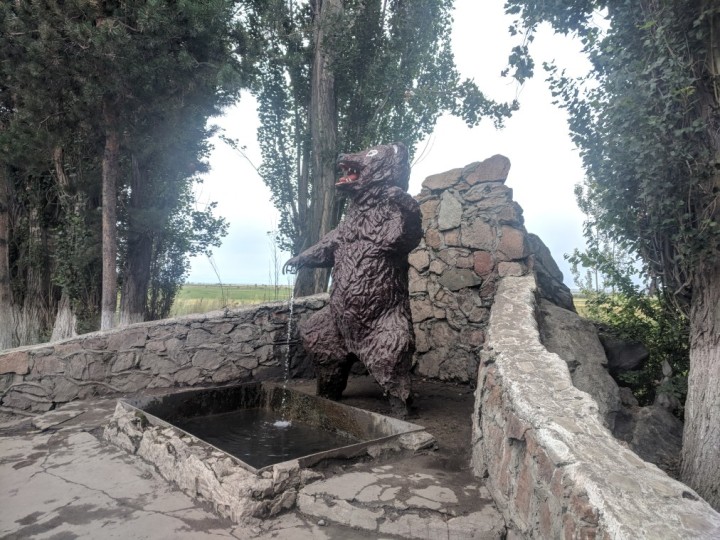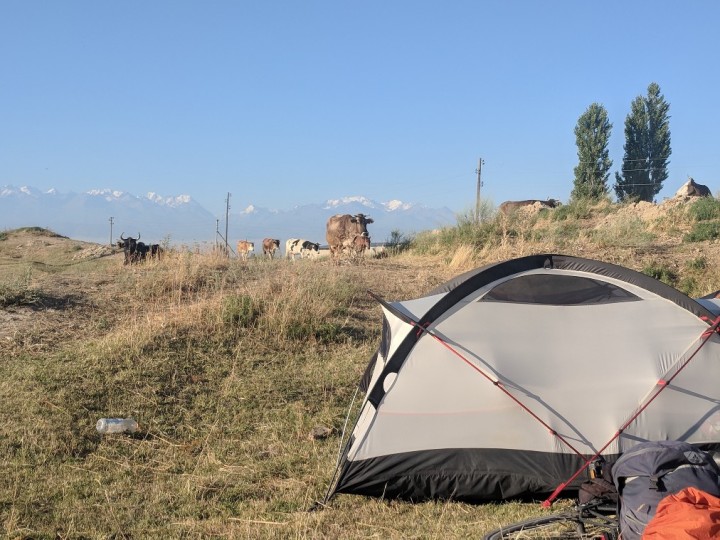A landlocked nation with mountainous terrain, she is part of the Turkic nations sharing similar language and culture. Before coming here we knew nothing about Kyrgyzstan, other than the name ending in –stan, so in this post we will share what we’ve learned so far.
Give me the Name
While planning the route we always had trouble spelling the name of this country. Tried “krygystan” and “kyrgyrstan” but autocorrect always came to the rescue. We finally learned when crossing the border and saw the name of the country in a big red letters:
Кыргызстан
As we have been learning Russian and the Cyrillic alphabet, we recognized 90% of that.
К ы р г ы з с т а н K y r g y z s t a n
Broken down letter by letter it is exactly as it is spelt in English! Also –stan simply means country, like how we have -land for England, New Zealand, and Swaziland.
Symbol of Home
For us kiwis, we think of the kiwifruit and bird (🥝 and kiwi emoji pending Unicode approval) as a symbol of home, and to the Kyrgyz and Kazakhs they too have a symbol of home.
Since arriving into the first stan (Еasт Тuякisтаи), a lot of yurts were seen scattered on hills, fields and riverside. These are the home of the Central Asian people.


How does the yurt relate to the 3 crisscrossing laths symbol commonly seen everywhere? A local told us the story…
Normally the yurt is seen with the top covered. The roof is actually removable so given the desired weather it can be removed.

When the weather clears up or the yurt is too hot, the cover can be removed revealing the pinnacle structure of the yurt. The sun enters the yurt bringing in light and warmth. If you stood center and look up, that is the national symbol of the people in Central Asia!

Water for the Travellers
Having cycled though the desert with no towns for miles on end, we carry with us 3 big bottles of water totaling 16+ litres. Luckily the town water supply here are drinkable so we don’t have to worry about boiling or filtering it first.
The locals here also carry with them 5L bottles to collect water at the roadside water fountain. Likely to save money and reduce the purchase of more plastic bottles, nonetheless we feel good they aren’t buying small plastic water bottles. The fountains provide cold and fresh water, a welcomed sight once every 100-200 km.


Campers Haven
The landscape here is not only beautiful, but you don’t have to worry about where you camp to enjoy the most of it. It feels like everyone is in agreement that the land here is for everyone to share.
We feel ashamed New Zealand has gone backwards in regards to freedom camping, but perhaps New Zealanders never had a nomadic lifestyle, or maybe our Department of Conservation is underfunded.







Love the drawings! Feels like I learned something today 🙂
LikeLike
Glad you learned something new! It was hard drawing on a phone screen haha
LikeLike
Hi guys
Loving your posts and photos. You two are amazing with what you are achieving. Keep the posts coming xx
LikeLike
Thanks for following us! We’re currently looking at ways of monetizing these content! (Always free though so don’t worry)
LikeLike